Ode on Melancholy1 |
|
No, no, go not to LetheA river in the underworld Hades in which souls about to be reborn bathed to forget the past; hence, river of forgetfulness., neither twist2
Wolf's-baneA poisonous flower, also called Monkshood. It has the reputation of being the "Queen of all Poisons." After consuming some, a quick death is nearly inevitable. Even touching its leaves without gloves could lead to death.
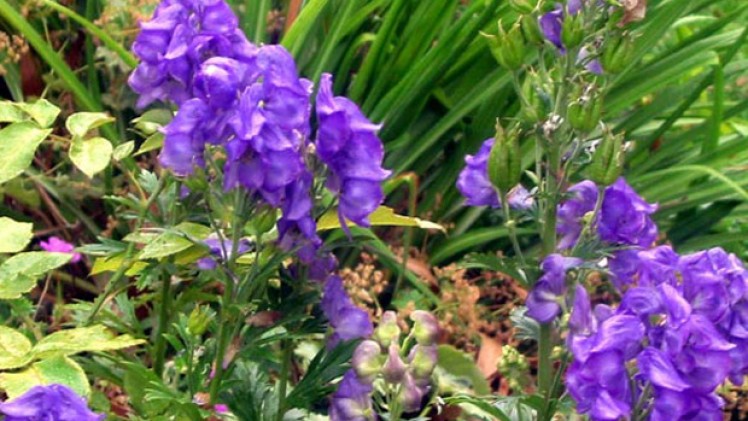 Wolfs-bane blooms., tight-rootedThe wolf's-bane has deep roots, meaning it is hard to remove., for its poisonous wineThe poison from the flower bud.;
Wolfs-bane blooms., tight-rootedThe wolf's-bane has deep roots, meaning it is hard to remove., for its poisonous wineThe poison from the flower bud.;
Nor suffer thy pale forehead to be kiss'd
By nightshadeNightshade is known as one of the most toxic plants in the Eastern Hemisphere. Keats is specifically referring to belladonna, which has red berries. They taste sweet and many people mistakenly eat them, only to die a few hours later. It only takes a few berries. While most animals will also die from consumption, cattle and rabbits are the two exceptions.
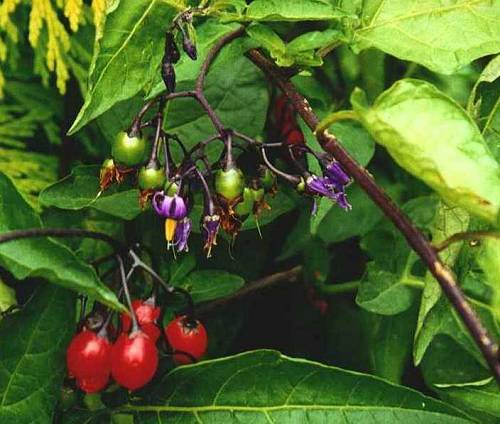 Atropa belladonna, ruby grape of ProserpineThe "ruby grape" is a poison provided by Proserpine, the mythological Queen of the Underworld in Ancient Rome. Prosperpine was kidnapped by Pluto and taken to Hades, his kingdom. Her mother Demeter, the goddess of fertility and grain, grieved for her loss and the earth became sterile. Proserpine was returned to her mother for six months each year when Demeter's joy is reflected in fertility and crops. Proserpine's story, with its connection to the change of the seasons, is appropriate for this poem. Many paintings of Proserpine include pomegranates.
Atropa belladonna, ruby grape of ProserpineThe "ruby grape" is a poison provided by Proserpine, the mythological Queen of the Underworld in Ancient Rome. Prosperpine was kidnapped by Pluto and taken to Hades, his kingdom. Her mother Demeter, the goddess of fertility and grain, grieved for her loss and the earth became sterile. Proserpine was returned to her mother for six months each year when Demeter's joy is reflected in fertility and crops. Proserpine's story, with its connection to the change of the seasons, is appropriate for this poem. Many paintings of Proserpine include pomegranates.
 "Proserpine" by Dante Gabriel Rossetti, 1874.;
"Proserpine" by Dante Gabriel Rossetti, 1874.;
Make not your3 rosaryPrayer beads.
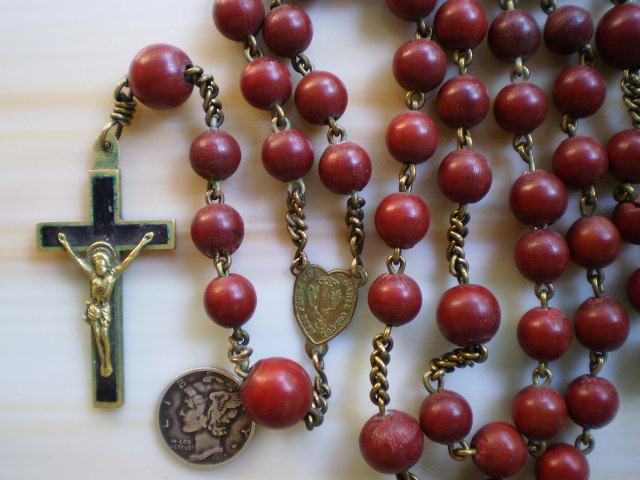 A rosary from the early 1800s. of yew-berriesAll parts of a yew plant are toxic to humans with the exception of the yew berries. While it may not kill a human, yew plant still causes negative effects like convulsions and collapse. The yew is traditionally associated with mourning.
A rosary from the early 1800s. of yew-berriesAll parts of a yew plant are toxic to humans with the exception of the yew berries. While it may not kill a human, yew plant still causes negative effects like convulsions and collapse. The yew is traditionally associated with mourning.
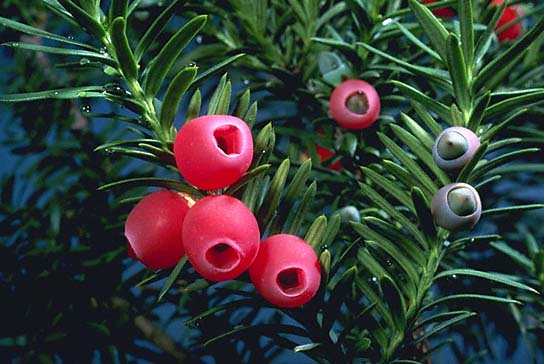 Taxus baccata'
Taxus baccata'
Nor let the beetleThe Egyptians regarded the beetle as sacred; as a symbol of resurrection. A jewel-beetle or scarab was placed in tombs with important figures.
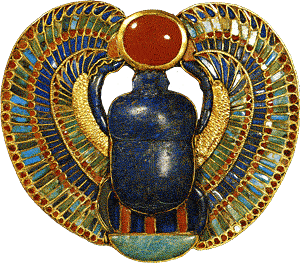 An Egyptian scarab beetle., nor the death-mothA moth that is said to be a herald a death, so called because markings on the thorax resemble a human skull.
An Egyptian scarab beetle., nor the death-mothA moth that is said to be a herald a death, so called because markings on the thorax resemble a human skull.
 A death moth. be
A death moth. be
Your mournful PsychePsyche is the ancient Greek root word in "psychology" and "psychic." It means the "mind" or "soul." The speaker means a person shouldn't allow their mind and soul to become altered by sorrow or to become overwhelmed with traditional symbols of death. Psyche is also a Greek goddess. Keats wrote an ode for her.
 "Psyche" by Jean-Baptiste Greuze, 1786., nor the downy owlA feathery owl. In this sense, owls were often associated with death. The speaker is warning against owls because they bring death.
"Psyche" by Jean-Baptiste Greuze, 1786., nor the downy owlA feathery owl. In this sense, owls were often associated with death. The speaker is warning against owls because they bring death.
 A sinister owl.
A sinister owl.
A partner in your sorrow's mysteriesThe speaker is talking about what causes us sadness.;
For shade to shade will comeThe feeling of melancholy will come when a person is already feeling low. Sadness seeks sadness. too drowsily,
And drown the wakeful anguish of the soulDeath and the things associated with it will numb the experience of anguish, which is not good. Without anguish, we would not be able to recognize how wonderful joy can be..
But when the melancholyMelancholy is sadness or dejection, especially of a pensive nature; gloominess; pensiveness or introspection. fit shall fall
Sudden from heaven like a weeping cloudThe speaker relates the oncoming rush of sadness to a fast approaching rain, or weeping cloud. This comparison is a simile.
 An approaching storm.,
An approaching storm.,
That fostersPromotes or supports. While "foster" is usually used in reference to good things, it can have negative connotations as well. the droop-headed flowersThe closed and heavy flower blooms. Rain will make them droop further. It means the sadness is closing and concealing the beauty in life.
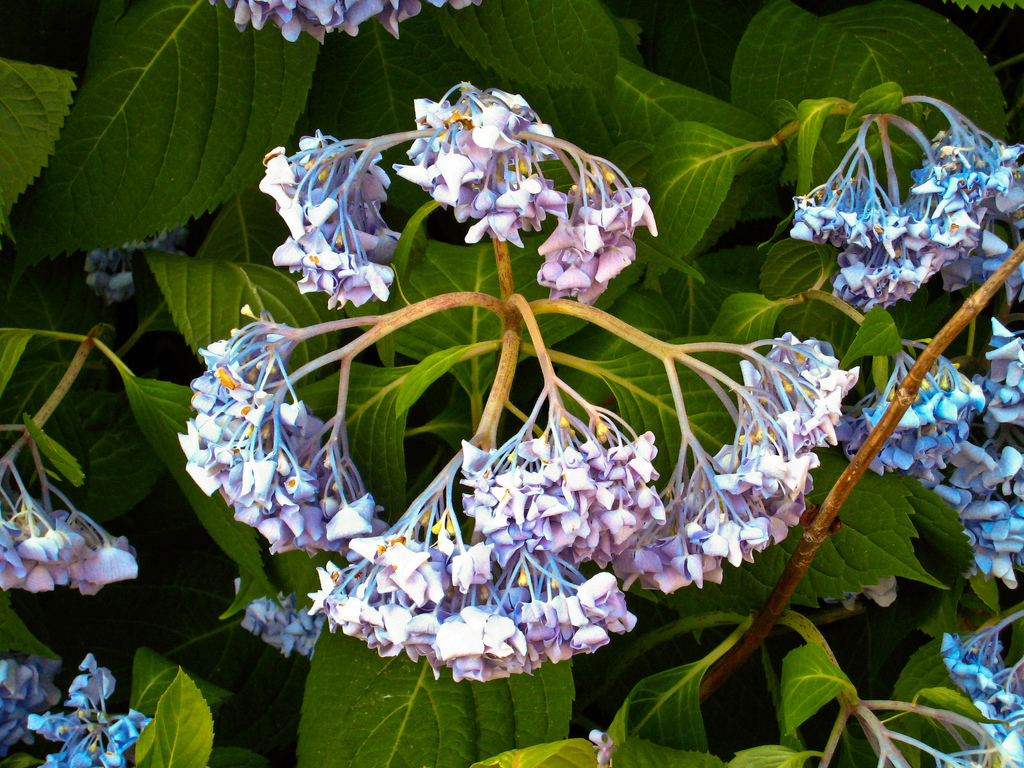 Drooping hydrangeas. all,
Drooping hydrangeas. all,
And hides the green hill in an April shroudLiterally, the rain. Figuratively, the sadness of melancholy is hiding the beauty of life and living.
 A storm obscuring the view of a hillside.;
A storm obscuring the view of a hillside.;
Then glutOverfeed. The speaker is saying to combat the sadness with lots of beauty to create happiness. thy sorrow on a morning roseThe speaker offers a morning rose as an example of beauty to combat melancholy. Morning roses only open in the morning, then close as the day heats up.
 A lovely rose.,4
A lovely rose.,4
Or on the rainbow of the salt sand-waveThe rainbow across the sky. This is another naturally beautiful image that does not last long. Critics disagree about if it is a rainbow, a rainbow from water, or a rainbow created by the roll of ocean waves. Generally, rainbow is the most common answer.
 A double rainbow.,5
A double rainbow.,5
Or on the wealth of globed peoniesBeautiful bloomed flowers that brown and whither quickly.
 Blushing peonies.;6
Blushing peonies.;6
Or if thy mistress some rich anger shows,
Emprison her soft hand, and let her raveThe speaker means that if a lover is angry or upset, holding their hand while they rant will make them happier sooner.,
And feed deep, deep upon her peerless eyesAnother moment often debated by critics. The best description is that gazing at the lover makes them feel heard..7
SheThis "she" can be the mistress or Melancholy. dwells with BeautyPersonified beauty, used to combat the later personified Melancholy.—Beauty that must dieBeauty must die, or fade away, because that is what makes it so valuable.,8
And JoyPersonified joy, used to combat the later personified Melancholy., whose hand is ever at his lips
Bidding adieu; and aching Pleasure nighPersonified pleasure, used to combat the later personified Melancholy. Pleasure is "nigh," or near.,
Turning to poison while the bee-mouth sipsWhile the bee enjoys the nectar, it turns to poison. This reinforces the idea that to be so pleasurable, lovely things must be temporary. Netar that sits too long can ferment, which will kill the bee.
 A bee collecting nectar.:
A bee collecting nectar.:
Ay, in the very temple of DelightPersonified delight, used to combat the later personified Melancholy.9
Veil'd MelancholyHere, Keats capitalizes melancholy. He is personifying sadness into a goddess. has her sovran shrineSovereign shrine. They were small points of worship placed in the community and homes.
 A Grecian shrine.,10
A Grecian shrine.,10
Though seen of none save him whose strenuous tongueThe speaker is saying that only people who can burst "Joy's grape," or those who can truly appreciate the moments of joy, understand how melancholy is linked to delight.
Can burst Joy's grape against his palate fine;
His soul shalt taste the sadnessThose who appreciate Joy's grape, or joyous moments, can understand the sadness present without feeling it. of her might,
And be among her cloudy trophies hungThis closing line means that each person that recognizes Melancholy's might is a trophy to her, showing her power..
Notes
1. Composed in 1819 and published in 1820. "Ode to Melancholy" is one of the lesser-discussed odes. It uses vivid imagery and shows how Keats felt about the relationship pain and pleasure share.
2. Originally, there was a stanza before this first one. This is it:
Though you should build a bark of dead men's bones,
And rear a phantom gibbet for a mast,
Stitch creeds together for a sail, with groans
To fill it out, bloodstained and aghast;
Although your rudder be a Dragon's tail,
Long sever'd, yet still hard with agony,
Your cordage large uprootings from the skull
Of bald Medusa; certes you would fail
To find the Melancholy, whether she
Dreameth in any isle of Lethe dull.
Keats removed this stanza and only published three.
3. This is the only ode not written in first person. Instead, the speaker addresses the listener as "you."
4. The "morning rose" works on two levels: It is a flower with temporary beauty, (and, with its diurnal imagery, refers to youth, or the morning of one's life), but it also calls to mind the word mourning. Here Keats expresses his belief that melancholy is a constant presence that must be recognized but not given control.
5. While not fully accepted by all, some critics interpret the "sand-wave" as a representation of the changing state of all reality. The wave, which is water, is a symbol of transience. The sand can be seen as the "changing sands of time." Sand is also a shifting form and it is unwise to build upon; altogether, the sand shows impermanence (Hirst 135).
6.Thunderclouds, the ephemeral blooms of flowers, rainbows, and the diffraction of light in the mist thrown off by a wave. While beautiful, the images above are all fleeting, demonstrating how temporary life itself can be. Therefore, they, and life, should be enjoyed while they are present.
7. The repetitious "ee" in this line is supposed to mimic the slowing of time.
8. The speaker explains these injunctions, saying that pleasure and pain are inextricably linked: Beauty must die, joy is fleeting, and the flower of pleasure is forever "turning to poison while the bee-mouth sips."
9. The personified figures—Beauty, Joy, Pleasure, and Delight—are all temporary. They give way to melancholy things, like ugliness, sadness, pain, and loathing.
10. Melancholy's shrine is best shown through the bee sipping nectar. While the bee is in the "temple of Delight" from drinking the nectar, Melancholy is still present. When the bee drinks the poison, Melancholy takes over.